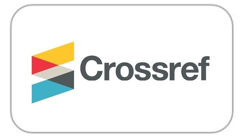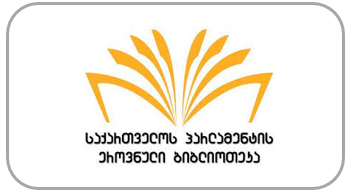AI-Driven Autonomous Trauma Care: Transforming Emergency Response in Military and Civilian Settings
DOI:
https://doi.org/10.52340/healthecosoc.2025.09.01.11Abstract
Introduction: Timely trauma care during the "golden hour" is critical to reducing mortality in military and civilian emergencies. Recent advancements in artificial intelligence (AI), machine learning, and robotics offer new opportunities to improve outcomes through autonomous diagnostics, triage, and logistical coordination. However, there remains a significant gap in integrating these technologies into trauma care systems, particularly in austere or high-pressure environments. Methods: This study conducted a systematic literature review to evaluate the effectiveness of AI-driven autonomous systems in trauma care. Databases searched included PubMed, Scopus, and Web of Science, covering publications from January 2000 to April 2025. Search terms included “AI in trauma care,” “golden hour,” “autonomous medical systems,” and “emergency response.” Grey literature and institutional reports were also analyzed. Study quality was assessed using the Newcastle-Ottawa Scale and AMSTAR tools. Results: AI systems demonstrated high diagnostic accuracy (AUC 0.88–0.92) and significantly improved triage efficiency (e.g., 18.7-minute reduction in wait time). Autonomous evacuation using drones reduced mortality by up to 30%, while rapid surgical handoff was associated with a 66% mortality reduction. Applications in both military and civilian settings showed survival rates exceeding 86%. Key areas enhanced by AI included injury detection, patient prioritization, evacuation logistics, and outcome prediction. Discussion: AI-driven systems enhance each phase of trauma care, particularly within the golden hour. Despite their benefits, challenges remain, including data biases, variable trauma timelines, and ethical considerations. Proposed solutions include the development of offline-capable mobile applications and real-time decision-support tools. Further research is needed to validate AI models and optimize system deployment in resource-limited environments. Conclusion: AI-driven autonomous trauma care systems show substantial promise in improving survival and operational efficiency in both military and civilian emergencies. Integrating these technologies into trauma response protocols may redefine standards for emergency care and significantly reduce preventable deaths.
References
1. Bledsoe, B. E. (2002). The golden hour: Fact or fiction? Emergency Medical Services, 31(6), 105–106. https://pubmed.ncbi.nlm.nih.gov/12078402/
2. Chatfield-Ball, C., Boyle, P., Autier, P., van Wees, S. H., & Sullivan, R. (2015). Lessons learned from the casualties of war: Battlefield medicine and its implication for global trauma care. Journal of the Royal Society of Medicine, 108(3), 93–100. https://doi.org/10.1177/0141076815570923
3. Char, D. S., Shah, N. H., & Magnus, D. (2018). Implementing machine learning in health care—Addressing ethical challenges. New England Journal of Medicine, 378(11), 981–983. https://doi.org/10.1056/NEJMp1714229
4. Cowley, R. A. (1975). A total emergency medical system for the state of Maryland. Maryland State Medical Journal, 24(7), 37–45.
5. Davenport, T., & Kalakota, R. (2019). The potential for artificial intelligence in healthcare. Future Healthcare Journal, 6(2), 94–98. https://doi.org/10.7861/futurehosp.6-2-94
6. Elhaddad, M., Farag, M., & Abdelaziz, A. (2024). AI-driven clinical decision support systems: An ongoing pursuit of potential. Cureus, 16(4), Article e57728. https://doi.org/10.7759/cureus.57728
7. Gauff, A. M., Mitchell, A. K., & Marion, D. W. (2024). Potential applications and ethical considerations for artificial intelligence in traumatic brain injury management. Journal of Clinical Medicine, 13(14), Article 4123. https://doi.org/10.3390/jcm13144123
8. Hamilton, A. J., Patel, S., & Smith, J. (2021). Machine learning and artificial intelligence: Applications in healthcare epidemiology. Antimicrobial Stewardship & Healthcare Epidemiology, 1(1), Article e28. https://doi.org/10.1017/ash.2021.192
9. Hampel, H., Toschi, N., Babiloni, C., & Lista, S. (2021). Artificial intelligence and machine learning in Alzheimer’s disease: A systematic review. Frontiers in Aging Neuroscience, 13, Article 683340. https://doi.org/10.3389/fnagi.2021.683340
10. Khorram-Manesh, A., Goniewicz, K., Burkle, F. M., & Robinson, Y. (2022). Review of military casualties in modern conflicts—The re-emergence of casualties from armored warfare. Military Medicine, 187(5–6), e645–e651. https://doi.org/10.1093/milmed/usab108
11. Kotwal, R. S., Howard, J. T., Orman, J. A., Tarpey, B. W., Bailey, J. A., & Champion, H. R. (2016). The effect of a golden hour policy on the morbidity and mortality of combat casualties. JAMA Surgery, 151(1), 15–24. https://doi.org/10.1001/jamasurg.2015.3104
12. Lerner, E. B., & Moscati, R. M. (2001). The golden hour: Scientific fact or medical “urban legend”? Academic Emergency Medicine, 8(7), 758–760. https://doi.org/10.1111/j.1553-2712.2001.tb00201.x
13. Liu, N. T., Salinas, J., & Holcomb, J. B. (2023). Artificial intelligence and machine learning for hemorrhagic trauma care. Military Medical Research, 10(1), Article 6. https://doi.org/10.1186/s40779-023-00443-2
14. Meyer, L. M., Smith, J., & Johnson, K. (2022). Artificial intelligence in acute care: A systematic review, conceptual synthesis, and research agenda. International Journal of Medical Informatics, 163, Article 104784. https://doi.org/10.1016/j.ijmedinf.2022.104784
15. Newgard, C. D., Schmicker, R. H., Hedges, J. R., Trickett, J. P., Davis, D. P., & Bulger, E. M. (2010). Emergency medical services intervals and survival in trauma: Assessment of the “golden hour” in a North American prospective cohort. Annals of Emergency Medicine, 55(3), 235–246. https://doi.org/10.1016/j.annemergmed.2009.07.024
16. News Intervention. (2021). Kargil: Do not lament the death of a warrior in battlefield. https://www.newsintervention.com/kargil-do-not-lament-the-death-of-a-warrior-in-battlefield/
17. Pamplin, J. C., Remondelli, M. H., Fisher, N., & Quinn, M. T. (2025). Fully autonomous casualty care on the future battlefield. Military Medicine, 190(3–4), 81–85. https://doi.org/10.1093/milmed/usae377
18. Piliuk, K., Tomilin, O., & Goniewicz, K. (2023). Artificial intelligence in emergency medicine: A systematic literature review. International Journal of Medical Informatics, 180, Article 105274. https://doi.org/10.1016/j.ijmedinf.2023.105274
19. Rai, K. M., Kale, R., Mohanty, S. K., & Singh, R. (2011). Treatment of casualties in a forward hospital of Indian Army: Nine year experience. Medical Journal Armed Forces India, 60(1), 20–24. https://doi.org/10.1016/S0377-1237(04)80151-5
20. Rajkomar, A., Dean, J., & Kohane, I. (2019). Machine learning in medicine. New England Journal of Medicine, 380(14), 1347–1358. https://doi.org/10.1056/NEJMra1814259
21. Recent trends in evacuation, triage, and the “golden hour”. (2017). ResearchGate. https://www.researchgate.net/publication/264420313_RECENT_TRENDS_IN_EVACUATION_TRIAGE_AND_THE_'GOLDEN_HOUR'
22. The golden hour of casualty care: Rapid handoff to surgical team is associated with improved survival in war-injured US service members. (2024). Annals of Surgery, 279(1), 1–7. https://doi.org/10.1097/SLA.0000000000005956
23. Worsham, V., Gonzalez, E., Kucia, M., & Smith, J. (2024). Army medicine and artificial intelligence: Transforming the future battlefield. Military Review, May–June, 130–141. https://www.armyupress.army.mil/Journals/Military-Review/English-Edition-Archives/May-June-2024/MJ-24-Army-Medicine-AI/
24. Zhang, Y., Li, J., & Wang, H. (2022). Machine learning for acute appendicitis diagnosis. Journal of Emergency Medicine, 62(3), 345–353. https://doi.org/10.1016/j.jemermed.2021.09.012
25. Chatfield-Ball, C., Boyle, P., Autier, P., van Wees, S. H., & Sullivan, R. (2015). Lessons learned from the casualties of war: Battlefield medicine and its implication for global trauma care. Journal of the Royal Society of Medicine, 108(3), 93–100. https://doi.org/10.1177/0141076815570923
Downloads
Published
How to Cite
Issue
Section
License
Copyright (c) 2025 Health Policy, Economics and Sociology

This work is licensed under a Creative Commons Attribution 4.0 International License.













